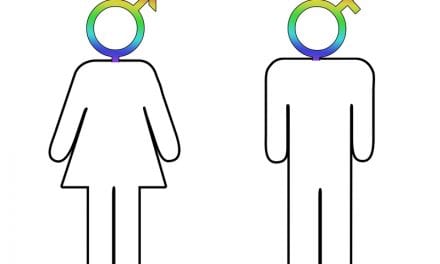ASAA 2005 Outlook

The American Sleep Apnea Association (ASAA) is a national nonprofit organization dedicated to reducing injury, death, and disability from sleep apnea, and to enhancing the well-being of those affected by this common disorder.
For 15 years, the ASAA has achieved this mission through education, support, and advocacy. The death of football player Reggie White pushed OSA into the spotlight, which prepared the ASAA to be a resource to those seeking information and support.
Education
Many readers of Sleep Review know that an important element of our educational effort is directed to the medical community. Representatives of the association attend medical conferences as exhibitors and, on occasion, as presenters. Our objective is to make physicians, both general practice and specialists, aware that sleep apnea is a seriously underdiagnosed and untreated medical condition. We also provide resources in the form of patient education bulletins such as Being Evaluated for Sleep Apnea and Treatment Options for Adults with Sleep Apnea. Physicians are free to photocopy all of our bulletins and distribute them to their patients. We also provide order forms for our brochures such as Get the Facts About Sleep Apnea and our video What is Sleep Apnea.
In addition to having representatives at the American Thoracic Society, APSS, American College of Chest Physicians (ACCP), and American Association for Respiratory Care conferences in 2005, we will be exhibiting at the American Society of Anesthesiologists (ASA) and the American Academy of Family Physicians conferences. This year, the ASA will publish its new protocol for anesthesia pre- and post-operative for patients with sleep apnea. This is the third year we will exhibit at their meeting.
The family practice physician is on the front line of identifying those with sleep apnea. We have exhibited at the conference in the past and will return this year to provide the physicians with the information they need to better serve their patients.
Working With the Public
The work we do with the general public is the other side of the education coin for the ASAA. Our Web site averages 2,000 hits per month, and from that we get hundreds of telephone calls and e-mail requests for information. The packages we send out include information on being evaluated for OSA, a list of our publications, a copy of a recent newsletter, and our basic brochure. Following Reggie White’s death in December, the number of Web site hits exceeded 20,000!
The association’s Web site, which is quickly becoming the primary way people learn about the ASAA, is currently undergoing an overhaul. We are rearranging the material on the site to make it easier to navigate. Please visit the site at www.sleepapnea.org and let me know what you think of the changes.
Another undertaking is a collaboration we are pursuing with the National Sleep Foundation. We have designated March 31 as Sleep Apnea Awareness Day during National Sleep Awareness Week. As we have done in previous years, we are targeting the general public to raise the overall awareness of sleep apnea. This year we are asking our Alert, Well And Keeping Energetic (A.W.A.K.E.) network of support groups, the National Sleep Foundation Community Sleep Awareness Partners, and interested community groups to distribute our “Snore Score” flyer. This flyer asks five simple questions where, if any are answered yes, that prompts the respondent to contact their physician or a sleep specialist to see if further tests are required. We plan to distribute 100,000 flyers throughout the country.
A second component to Sleep Apnea Awareness Day will be a lecture, cosponsored with the ACCP Institute. The talk will be presented by David M. Rapoport, MD, associate professor of medicine, New York University, and a board member of the ASAA. The public lecture will provide an overview of the diagnosis and treatment options for sleep apnea. The second part of the lecture will discuss the comorbidities that can be exacerbated by OSA and the cost to society for not addressing them.
Support
We receive telephone calls from people who just want to talk and seek reassurance that their lives are not over just because they were diagnosed with sleep apnea. These calls are just as important as the calls requesting information. Another significant element of the work the association does is provide support to those diagnosed with sleep apnea and challenged by the treatment options.
In addition to the individual support and encouragement we provide to those in treatment on the telephone and via e-mail, the association sponsors the A.W.A.K.E. network of support groups throughout the country. There are currently more than 250 groups with new groups forming all the time.
Participating in these support groups provides the following:
• Mutual Support—helping people with sleep apnea realize they are not alone with this condition;
• Continuing Education—provides the public with the opportunity to learn about changes in technology and information specific to staying with treatment; and
• Empowerment—participants are equipped to speak to others who are at risk of OSA.
The ASAA continues to work with interested organizations and individuals to establish as many A.W.A.K.E. groups as possible, particularly in areas of the country where none exist. Our goal is to have a group in all 50 states, the District of Columbia, and Puerto Rico before the end of the year. We will be holding an A.W.A.K.E. group coordinators meeting at the APSS meeting in Denver this year.
Advocacy
The ASAA presents testimonies to agencies of the Federal government to benefit our members and those living with sleep apnea. Last year, we spoke to a Medicare Coverage Advisory Committee of the Centers for Medicare and Medicaid Services on the use of unattended portable multi-channel home sleep testing devices as an alternative to facility-based polysomnography in the diagnosis of OSA. We also spoke to a public advisory committee of the Food and Drug Administration on prescription versus over-the-counter treatments for mild to severe sleep apnea.
We publish position statements on issues of concern to those with sleep apnea such as sleep apnea and driving. We also produced a statement about the initial patient instruction on CPAP in response to the practice of drop shipping CPAP devices to new patients.
The ASAA will continue to look for opportunities to speak out on behalf of those living with sleep apnea and take positions on issues of concern to them as well.
Prospects for the association are looking very positive for the future. I look forward to working with you to enhance the well-being of those affected by OSA.
Edward F. Grandi is executive director of the American Sleep Apnea Association, Washington, DC.




